-
Lace 101 – All the Lace Types You Need to Know
Lace can be found in various styles and details, the majority are still made using old traditional techniques and keep the name of the town they were created in. Lace is a open-weave fabric that enriches a wedding gown and is arguably one of the key elements of your bridal attire.
Lace can be sown directly on a base fabric such as silk, taffeta, satin or on invisible tulle that will be overlayed on the gowns structure. Lace is a detailed decorative fabric with complex motifs and a net of various dimensions and shapes.
Every style and pattern is fabulous it’s unique and special way. Lace can be embroidered, interlaced with lurex, re-embroidered or corded. Whatever your choice, keep in mind that lace will alter the price of your gown.
Alencon
Also known as “queen of lace”, Alencon is a fine needlepoint lace, most commonly known for its floral motif on illusion tulle or net. It was created in the 16th century in the french region of Alencon and is perfect for details and superior layers of your wedding gown.
The definitive characteristic of Alencon is the fine cording that is applied to the outlines of the motif. Extremely delicate, Alecon has more structure and body than Chantilly lace.
Guipure
Guipure or venetian lace is a french bobbin lace elegant and robust, often used in wedding gown making. That is because Guipure doesn’t fray, it’s easy to cut and handle. Guipure is heavier and more textural, a lot more intense than other laces.
The pattern is created by a series of close, embroidered stitches onto a fine fabric that seems to disappear in the finished piece. This characteristic gives its ability to be used without a support net.
Chantilly
Created in the 17 century in the french town of Chantilly, this delicate lace is elegant and dreamy. Known for its delicate and detailed motifs, this lace will give you a very elaborate wedding gown. Chantilly has a fine cord outlining its motif. It is one of the most expensive wedding gown laces.
Embroidery
Embroidered lace use tulle backing, onto which a decorative pattern is applied using a needle and thread to form the appearance of an applique. Embroidered lace can use pearls, beading, sequins and cording. This type of lace will give your gown more character and dimension.
Lyon
French Lyon lace is created with 18 century techniques that means producers create 35 centimeters of lace per hour. Lyon lace can be made from cotton fibres and has various traditional floral details. You can incorporate iridescent beading and pearls.
Duchesse
This type of belgian lace was created for duchesse Marie-Henriette of Brabant, from whom it borrowed its name. Was manufactured from 1840 throughout the 19th century in Brussels and Bruges. It became popular because it made a cheaper alternative to french lace.
The design motifs were joined not by a mesh but by thin bars, or brides. Offers a distinct character and is perfect for romantic brides.
Spanish
Spanish lace is hard to identify because most laces used at the royal court of Spain starting with the 17th century were mostly imported from Venice ( the most important lace centre in Italy) and France.
Using lace in various religious ceremonies made spanish lace identify with floral motifs with a heavy feel (most commonly the mantilla veil).
Spanish lace centers, similar to the ones in Barcelona, were known for producing blonde lace.
Blonde lace
The name denotes the slight colouring of this lace. The original term refers to chinese silk bobbins that were not whitened. Later on the term included various types of bleached materials used to produce lace.
Battenberg
This american lace takes its name from the Battenberg family wedding that took place at the same time this pattern was created. It has a certain renaissance vibe and it’s perfectly suited for brides that want a unique bridal gown.
Brussels
Brussels lace is extremely delicate and rare. Legend says that women of 17th century used to work in the dark, avoid light which would make the fibre brittle. Today similar patterns can be created using modern techniques.
Princess
Princess lace is exclusively machine made and was created in Belgium at the end of the 19th century. With this lace we are talking about industrial lace with a lower production cost. That is why this type of lace became a favorite within the bridal industry.
It is made of straight machine-made lace tapes also called princess lace. The lacemaker bends and folds these into the shape of flowers and leaves, and sews them into position.
Soutache
Also known as russian lace this type of embroidery has a decorative character and is influenced by the military motifs. Today it can be found in various types of models and is perfect for brides that want a slight three-dimensional pattern.
Schiffli
The chemical lace is a type of lace that is created on a sacrificial fabric that later disintegrates when chemically treated, leaving behind the lace. Schiffli machines came into use in the late 19th century.
3D lace
As its name tells, this type of lace maintains its features but has an overlaid motif that created a partially three dimensional texture. This is the perfect lace for tulle skirts with a long and impressive train that will enhance the 3d effect.
Keep in mind that your wedding gown will feature a mix of two or tree types o laces and will most certainly have a unique design. What’s your favourite type of lace?
-
Wedding Dress Bustle – What Type Is the Best for You

Every brides dream is to have an amazing princess wedding gown with a long impressive train or an incredible mermaid wedding gown with a complex lace or tulle train. This is the perfect look for the ceremony and your exceptional wedding photos will prove it.

Every guest will be in awe of your beautiful gown and you will adore the look -it’s your moment to shine and be the real star you deserve to be. But what will you do after that moment? How will you deal with that impressive train that fascinated everybody? That’s where the bustle comes in.

The wedding dress bustle will save you! But (please) make sure you are choosing the right type for your gown – you will avoid it ripping (if it’s unsuitable to support the weight of your train) or look out of place ( for instance the 5 point American bustle can look bulky on certain gowns).

There are various types of bustle, we will talk about the most common ones, but you should choose the one that fits your wedding gown to a tee. The bustle must keep track of the weight of the train, the hooking system, of how visible it is when not bustled and the various materials that compose the train ( taffeta, silk, lace etc)
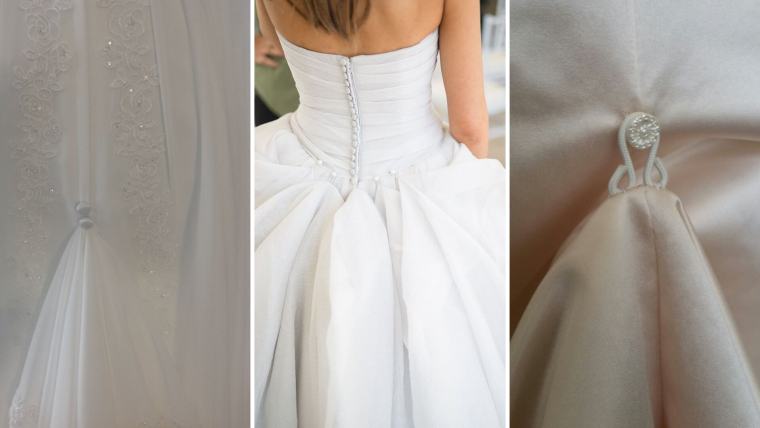
The bustle consists of ribbons, loops, buttons, eyes and hooks that are sewn in the train in specific places and ways to support the train. You should try to hide as much as possible the details, but keep in mind that they might be visible when the train is not bustled.
Is my dress suitable for a bustle?

Yes, most wedding gowns can be bustled but some are better at hiding the bustle. For instance when it comes to wedding gowns with ruffles or tulle they can hide extremely well the bustle hooks – in such a manner you won’t even realise a bustle exists.

How many types of bustle there are?

Every sartorial school has it’s own way of dealing with bustling a wedding gown, but every bustle is in the end determined by the bridal style.
Basically the train can be bustled over the skirt, under a pleat of the skirt or under the skirt itself.
Let’s get into details
1. The American Bustle
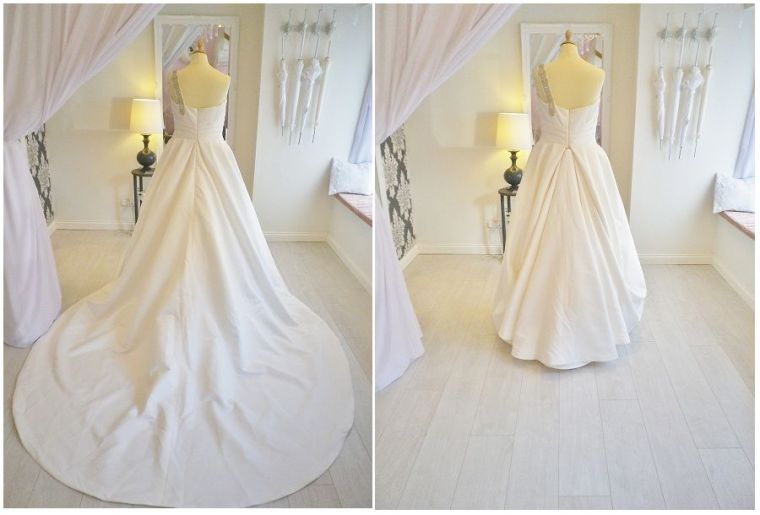
The buttons or hooks are attached to the exterior of the gown. Choosing the right placement is key, you can also choose to have multiple buttons or hooks to make sure the weight is supported well.

This style is suitable for mermaid trains as well.
2. The Austrian Bustle

Ribbons are used to create a ruched design all over the train – think of the cinching of curtains). This style was extremely popular with Austrian nobility so if it suited Empress Sissi we’re all in.
3. The French Bustle
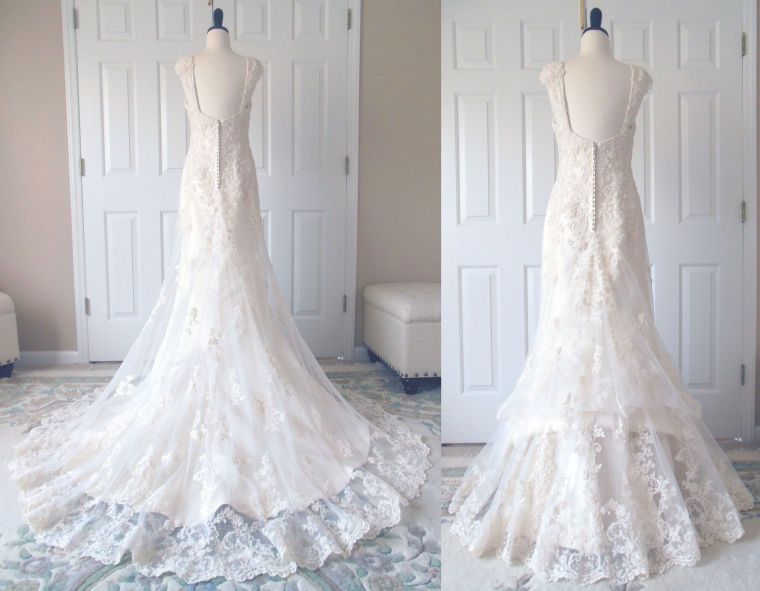
This technique is the reverse of the American bustle, as hooks pick up the train of the gown as they tuck under the silhouette itself.
4. The Ballgown Bustle

This type of bustle completely hides the train giving the illusion the gown was always floor length. Multiple bustle points are sewn inside making it possible for the train to fold inside.
5. The Waterfall Bustle

Similar to the French Bustle this type of bustle chooses various points ( depending on the length of your train) and with ribbons locks the train in place.
6. The Overlaping Bustle

This bustle places the train on top of your floor length skirt. Multiple points are made around the bodice or at the base of your fishtail making it possible to pin the train on top.
No mater what type of bustle you choose make sure it is resistant and you will feel at ease with it. Keep in mind that some type can be expensive so maybe you will be better suited with a second wedding dress for the part ( here are some great short wedding gowns to choose from).
-
25 Fabrics You Need to Know Before Purchasing Your Wedding Gown
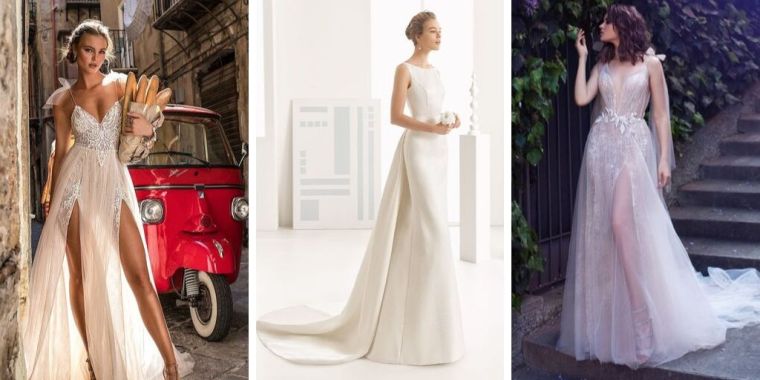
The shape of your gown, its texture and draping along with your wedding season are key factors that will determine the best fabric to be used when creating or purchasing “THE ONE”. For example: a column gown needs a fine texture that give your a sense of flow while a ballroom gown needs stiffer fabrics that help maintain the desired silhouette.
Almost every wedding gown has a mix of fabrics ensuring that you have the best quality and shape you can obtain. The bridal dress is a complex composition of rigid and lightweight fabrics, rougher and more delicate– all in a perfect play of elegance and refinement.

As you can see from the above image a wedding gown has a more rigid structure underneath the layers of lace and embroidery and skirts that can be created by layering different types of tulle, organza etc. Every gown is special and the one you desire will be a mix of all the components you desire- one thing is for sure, make sure that the fabrics you opt for give you the structure necessary for a long day.
Today we’ll talk exclusively about fabrics that can create structure and details to your wedding dress. We’ll analyse all types of laces in a future post.
Satin
One of the most common, durable and versatile fabrics, satin is heavy and shiny, made out of several types of fibres such as silk, nylon and rayon. Satin is a type of weave that gives its characteristic shine from the way the fibres are woven together.
It’s a supportive fabric that can create a perfect base for a wedding gown but can be worn on its own as well. Perfect fabric for autumn and winter weddings as well as jackets, sleeves and boleros.
Chiffon
Chiffon ( most fabrics retain their original french name) is a soft and sheer material without any shine, often used in layers to create skirts and in single shear sheats as overskirt, sleeves or sheer silhouettes.
It’s a very popular fabric for skirts because it gives that feel of movement and a very special elegance when worn. Chiffon is the reference fabric for empire gowns and boho silhouettes.
Tulle
Tulle is a gauzy, netted material most commonly used in skirts and details ( such as sleeves). It’s a light material made of silk, nylon or rayon. Most commonly used in many layers to create the ballroom gown. There are a multitude of tulle types – most commonly used for the base of a skirt are the rigid, coarser textures , while for the overlay layers softer tulle is used. For more sparkle you can choose a type of tulle that is weaved with lurex.
Organza / Organdy
Even do it is sheer and lightweight fabric, organza maintains the structure of a wedding gown and confers a stiffer texture. A very delicate fabric it is used for volumizing skirts but it can be used as well for sleeves and corsetry.
For its lightweight structure organza is a perfect fabric for summer weddings. Not to be confused with organdy, which is made out of cotton, organza is made using silk.
Silk
A fabric with a specific shine created by using the oldest type of natural fibres – the one made by the silkworm, making it the most expensive on the market. Even do it has a delicate look silk is extremely durable and versatile.
Silk can be used in all seasons and it suits well more traditional silhouettes, but it has been used in contemporary styles as well. This fabric has an incredible timelessness.
Gazar
Made of wool or silk this fabric is created by double weaving and twisting the fibres. Has a very fine texture and keeps its shape for a long time, making it extremely durable. Perfect for princess cuts and creative styles.
Mikado
One of the most luxurious types of silk, Mikado is used for structural wedding gowns. It’s heavier that regular silk and hence it gives more volume and creates a more haute couture feel.
Dupioni
The most popular mix of silk, most times synonymous to Shantung because the two fabrics share similar textures. But Dupioni is a bit heavier and rougher because the fibres are still exposed and become a bit coarser.
Taffeta
This fabric is made from silk or synthetic fibres, the better the quality the more rigid the taffeta. It has a delicate shine to it, but it’s more toned that satin, and it fits most silhouettes. It is an ideal fabric for A-line gowns and bridal gowns with draping details.
Charmeuse
A light, semi-shine and soft fabric made from silk or synthetic fibers. Similar to silk when touched but it lacks the shine. Given its shape it drapes phenomenal and it’s ideal for lightweight wedding gowns, such as empire or column.
When it comes to haute couture gowns they are lined with charmeuse. Keep in mind that this fabric is quite unforgiving, you can’t wear much underneath.
Georgette
This fabric is traditionally made from silk and has a wrinkled texture that can be a bit rougher. But this gives georgette an amazing capacity to retain its original shape and offer a true flow.
The weaved fibres are extremely tight because they are very thin, giving georgette a true resistance and versatility. This fabric can be used many times, it can also be draped – it is similar to chiffon but it is heavier and more opaque.
Batiste
A light, soft, sheer fabric with shine and durability. It is woven from cotton or linen and gives a true option to any eco-conscious bride. Batiste is a common fabric with vintage wedding gowns.
Brocarde
This fabric is woven using a french technique invented by Marie Jacquard, sometimes even borrowing its name. Brocarde is a highly ornate fabric with a heavy and rigid structure. This is a traditional fabric perfect for autumn and winter brides but also traditional brides that want that cathedral look.
Crepe
Crepe is a light, soft and thin fabric with a shine surface obtained through fiber spinning and chemical treatment. Perfect for draping and column gown, it can cling to the body, showing everything.
Damasc
A perfect alternative to brocarde if you are getting married in the summertime. It is a woven fabric but a little bit lighter that brocarde. Perfect for vintage wedding gowns and ball gowns.
Satin duchesse
A light hybrid between silk or rayon/polyester woven with a satin finish. It’s stiffer and lighter than satin but less prone to wrinkle, a perfect choice for brides that love to dance all night.
Faille
One of the most structured types of silk it’s easier to tailor that normal silk or satin while keeping its shape. Can be made from silk, cotton or synthetic fibres.
Illusion
Illusion fabric is finely woven in net material. It’s often used as a decorative support for sleeves, necklines or backless gowns. This is the fabric you never see.
Moire
This is a type of taffeta with a heavier and crispier feel. A perfect fabric for wedding gowns with volume and structure.
Peau de soie
A fabric similar to satin with a mat and slightly granular look. Has great draping abilities but it can be used as well in rigid mermaid silhouettes. Perfect for early spring brides.
Shantung
Shantung has a rubbed texture that resembles raw silk. It’s softer that dupioni being one of the most popular fabrics used for bridal gowns.

Dotted Swiss
Originally from Switzerland this fabric is handspun on looms. A lightweight, breathable fabric with a sprinkled elegant dotted motif perfect for tulle skirts and even veils. Ideal for vintage brides.
Point D’esprit
Recognisable by name, this french fabric is extremely elegant and feminine. Has a structure similar to tulle perfect for skirts and sleeves.
Rayon
Known as synthetic silk or viscose, rayon is a semi-synthetic fiber made from cellulose. A cheaper alternative to silk, it is smooth, light breathable. Keep in mind that it can wrinkle easily.
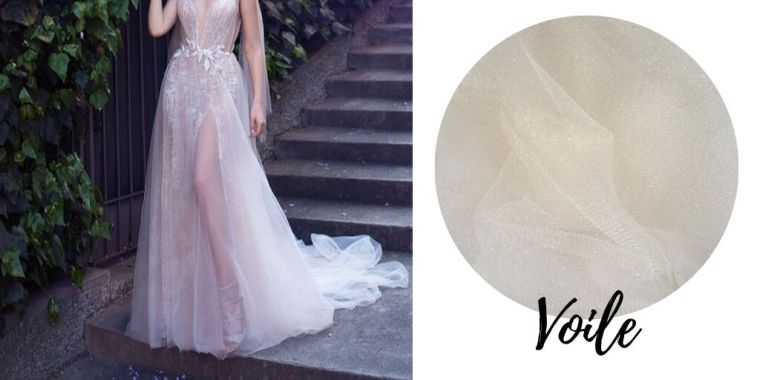
Voile
Semi-transparent and sheer, made from cotton, wool, worsted silk or synthetic fibers like polyester. It’s a perfect material for summer weddings and can create lovely princes looks or sexy mermaid or A-line gowns.
-
15 Of The Most Beautiful Short Wedding Dresses

Rosa Clara 2020 Collection Princess gowns and mermaid style wedding dresses are perfect for the formal ceremony ( be it vows or church) and the incredible party you will have for you wedding. But I must admit I have a soft spot for short wedding dresses more suited for a civil ceremony ( if you live in Europe) and a less formal party.

Novia D’art 2020 Collection I always admire the vintage inspired brides that opt for a tea-length wedding gown and birdcage veil. But short wedding dresses are far from being just a vintage affair – you can not get more modern and with an elegant avant-garde short number.

And you don’t have to imagine a mini dress when considering a short wedding dress, as all bridal looks they come in various shapes and sizes and you will surely find the one suitable to your style.
I fully recommend a fabulous short wedding gown for your after party dancing and evening your honeymoon getaway car. Here are a few trends that you’ll love from the some of the top bridal designers across the web.
1. The Short A-line Wedding Dress
Following the perfect lines of an A-line wedding gown these petite robe blanche versions are just adorable. Versions like these are found in Berta Bridal, Pronovias and many other bridal designers.
2. Tea Length Wedding Dress
Elegant and classy but without the full vintage vibe these gowns are perfectly suitable for the modern bride. Loving the BHLDN soft floral details and we can’t get over how beautiful the Birenzwaig gowns are.

3. High low Short Wedding Dress
You can’t decide upon the final length? Try a high and low short wedding dress that will surprise everyone.
4. Avangarde Short Wedding Gown
You can even go full haute couture with designs such as the ones from Ashi Studio or Yoav Rish.5. Mini Wedding Dress
Get the 60’s and 70’s vibe with these short wedding gowns that will surprise and delight everyone.
Not to mention you could add a detachable tulle skirt to create a ceremony look for a 2 in 1 bridal look.
Beauty and fun, what is your favourite? Don’t forget to share it with your bridal party!

-
Best 2020 Colours for Women Wool Crepe Dresses

The trends are in and 2020 seems like the perfect year to wear elegant and extremely chic evening gowns. More so if you have many wonderful weddings to attend to . If we’ve mixed and matched trends form years now when it comes to materials we always go for the best – Tissura.
Our absolute favourite is wool crepe fabric that features a dense texture. Made with closely woven threads, it is thin, crisp and highly durable. This Italian wool crepe has a slight stretch in the weft. With a matt face and an easy drape, it is ideal for classy dresses.
Made to evoke glam and elegance this material will make your gowns dreamy and you will be the best dressed at each and every wedding your attend. The difficult part? Choosing the perfect shade! At Tissura you will find the best shades and matches for your wool crepe gown Take a look at their samples and let us know what’s your absolute fav!
-
Chic Nostalgia 2020 Spring Bridal Collection

Chic Nostalgia is a unique designer bridal collection that was established in 2009 under chief designer, Amber He. Amber embodies the character and spirit of Chic Nostalgia with her free and creative spirit, making her wedding dresses refreshing and one-of-a-kind.
Please contact the designer for authorized retailers and pricing information. Check our Bridal Designers Directory for similar gowns. Don’t forget to share the gowns you like on Facebook, Twitter and Pinterest, it means the world to us.

-
Dovita Manon 2020 Spring Bridal Collection

Dovita Bridal is a new leader in bridal fashion. With a superb fit and couture finishing, their attention to detail sets their gowns apart from many other designers. The signature of Dovita Bridal gown is definitely in the luxurious fabrics and exquisite beading. The gown range offers you a diverse selection of styles from glamorous draped Angel Satin to alluring Laces and Satin Chiffon.
Please contact the designer for authorized retailers and pricing information. Check our Bridal Designers Directory for similar gowns. Don’t forget to share the gowns you like on Facebook, Twitter and Pinterest, it means the world to us.
-
Fara Sposa 2020 Spring Bridal Collection

Fara Sposa was launched by Spanish bridalwear company Novia D,Art to offer brides something different, but affordable. Novia D,Art is a family run company and has been manufacturing bridal gowns in Spain for over 40 years
Please contact the designer for authorized retailers and pricing information. Check our Bridal Designers Directory for similar gowns. Don’t forget to share the gowns you like on Facebook, Twitter and Pinterest, it means the world to us.
-
Antonio Riva 2020 Spring Bridal Collection

Antonio Riva, from the historic lake town of Lecco in Italy, creates masterpieces from pure Italian silk. Lecco has always been being a crossing point between Central Europe and the Mediterranean providing master artists like Antonio Riva with creative inspiration.
Please contact the designer for authorized retailers and pricing information. Check our Bridal Designers Directory for similar gowns. Don’t forget to share the gowns you like on Facebook, Twitter and Pinterest, it means the world to us.
-
Aria Bride 2020 Spring Bridal Collection

Aria Bride is constantly working on new exclusive outfits for brides. Therefore, all models in the catalogs are unique. The company designers are constantly working on new exclusive outfits for brides. They impress with their cut, luxurious trimming. All the outfits are tailored using only high quality fabrics and expensive decorative elements.
Please contact the designer for authorized retailers and pricing information. Check our Bridal Designers Directory for similar gowns. Don’t forget to share the gowns you like on Facebook, Twitter and Pinterest, it means the world to us.





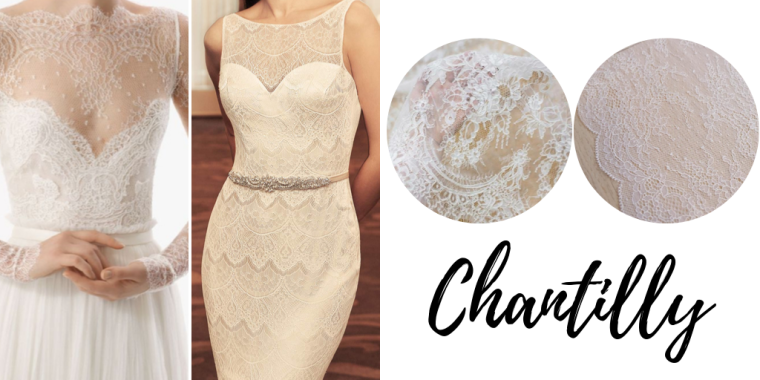







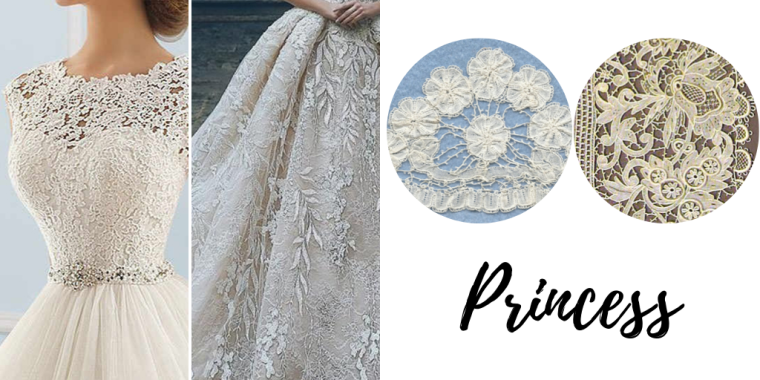


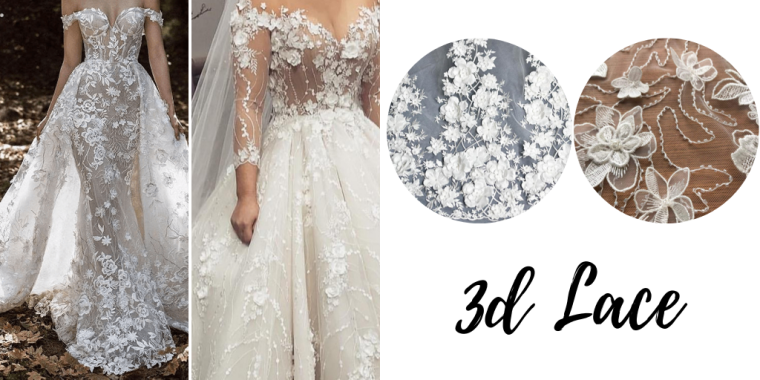







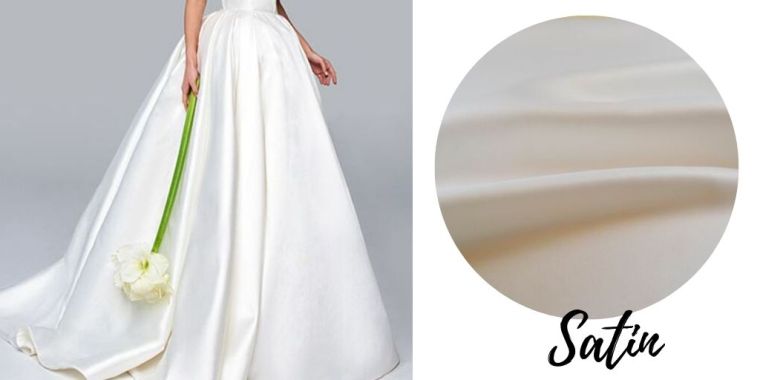











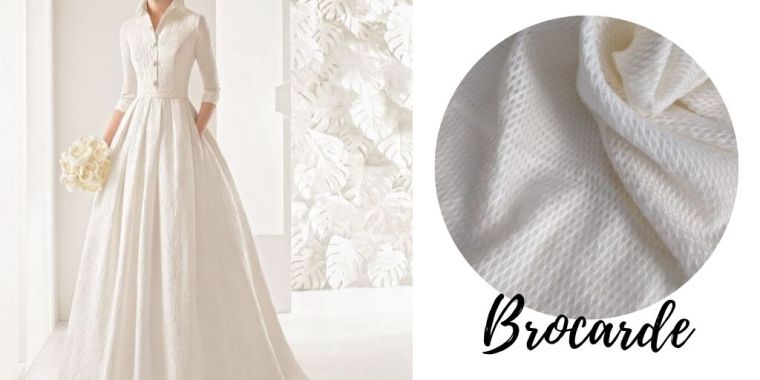
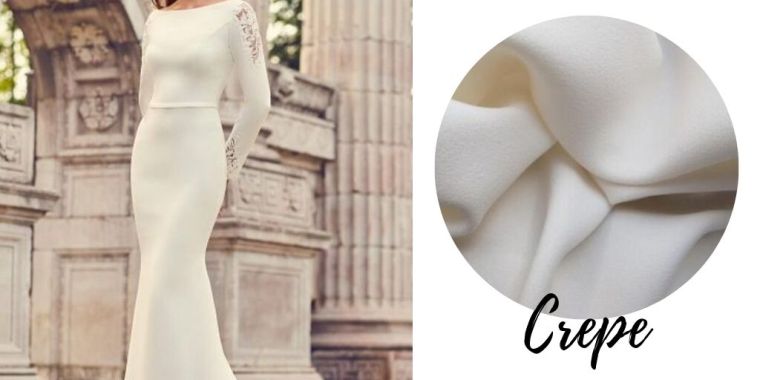


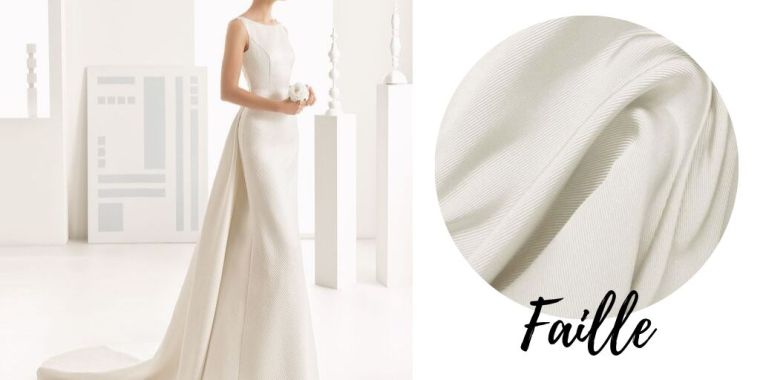

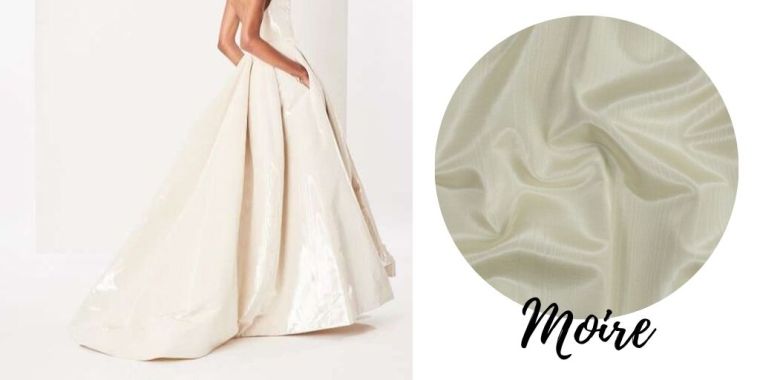



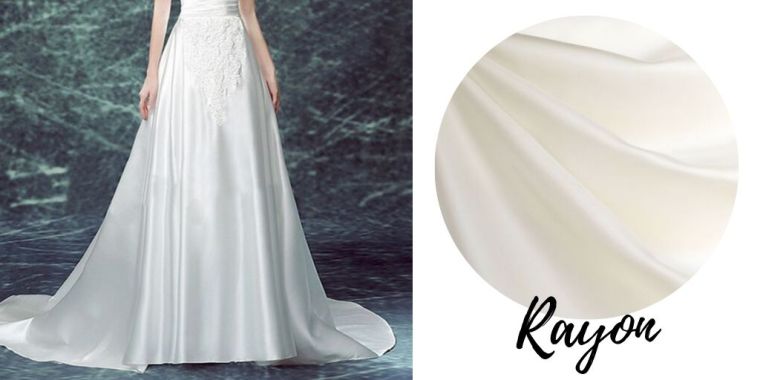











![2020_CINTIA_ROSA_CLARA_2[1] Rosa Clara](https://i0.wp.com/thefashionbrides.com/wp-content/uploads/2019/09/2020_cintia_rosa_clara_21-e1569349235969.jpg?w=475&h=715&ssl=1)



![Viktor_Rolf_MariageVI_by_Marijke_Aerden_1399_R.width-960[1] Viktor and Rolf](https://i0.wp.com/thefashionbrides.com/wp-content/uploads/2019/09/viktor_rolf_mariagevi_by_marijke_aerden_1399_r.width-9601.jpg?w=348&h=522&ssl=1)










































































































